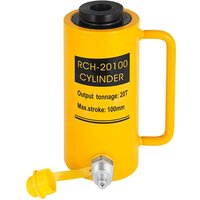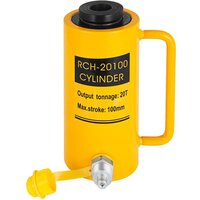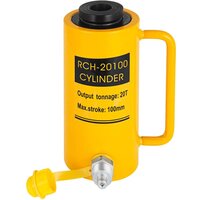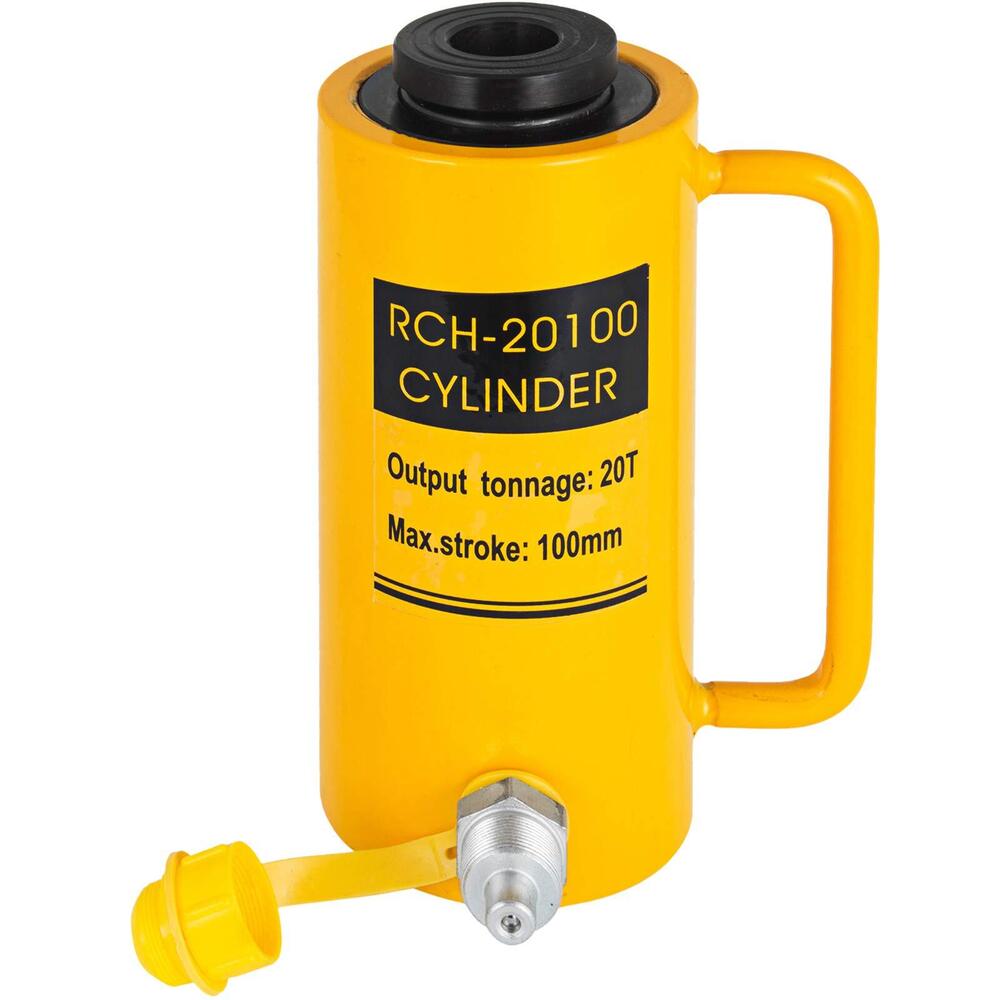


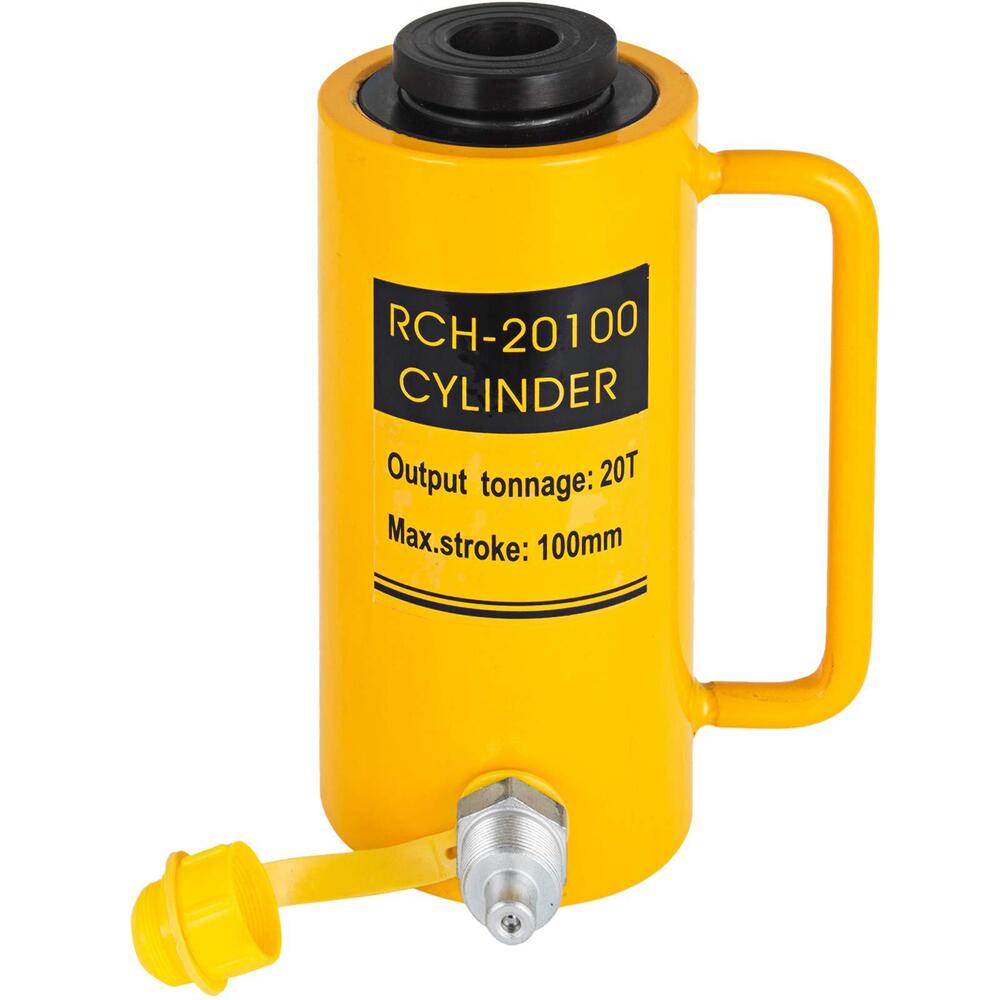







Single acting hollow plunger hydraulic cylinder
Product Details:
- Usage Industrial
- Body Material Steel
- Type Hydraulic Jack
- Size Standard
- Product Type Single acting hollow plunger hydraulic cylinder
- Color Yellow & Black
- Warranty 1 Year
- Click to View more
Single acting hollow plunger hydraulic cylinder Price And Quantity
- 1 Piece
- 5000.00 - 6000.00 INR/Piece
- 5000 INR/Piece
Single acting hollow plunger hydraulic cylinder Product Specifications
- Standard
- Hydraulic Jack
- 1 Year
- Steel
- Single acting hollow plunger hydraulic cylinder
- Yellow & Black
- Industrial
Single acting hollow plunger hydraulic cylinder Trade Information
- 1000 Piece Per Week
- 7 Days
Product Description
A single-acting hollow plunger hydraulic cylinder is a type of hydraulic actuator that uses fluid pressure to extend the plunger while relying on an external force, like gravity or a spring, to retract it. Here are some key features and characteristics:
Design- Hollow Plunger: The plunger is hollow, allowing for other components, such as rods or tools, to be inserted or operated through it.
- Single-Acting: It operates in one direction; hydraulic fluid is applied to one side of the piston to extend it, and the retraction happens due to an external force.
- Extension: When hydraulic fluid is pumped into the cylinder, it creates pressure that pushes the plunger outwards.
- Retraction: Once the pressure is released, the plunger returns to its original position through external forces.
- Lifting and Positioning: Commonly used in applications where lifting or positioning is required, such as in construction, manufacturing, and material handling.
- Mold Opening/Closing: Often used in die-casting or molding processes.
- Simplicity: Fewer components compared to double-acting cylinders, which can mean easier maintenance.
- Cost-Effective: Generally more affordable due to their simpler design.
- Limited Force in One Direction: Only provides power in one direction, requiring additional mechanisms for retraction.
- Dependency on External Forces: The efficiency of operation can depend on gravity or springs.
-
Hollow Design: The hollow center allows for easy access to the interior, which can be beneficial for certain applications, like threading tools or rods through the cylinder.
-
Piston Mechanism: The piston within the cylinder is designed to handle high pressures while minimizing friction. This ensures smooth operation during extension.
-
Seals: Effective sealing is crucial to prevent hydraulic fluid leakage. Seals are typically designed to withstand high pressures and environmental conditions.
-
Mounting Options: Many cylinders come with various mounting configurations, allowing for flexible installation in different setups.
-
Space Efficiency: The hollow design can save space and allow for more compact machinery setups.
-
Less Complexity: With fewer moving parts, single-acting cylinders can be easier to troubleshoot and repair.
-
Weight Reduction: They are generally lighter than double-acting cylinders, which can be a significant factor in mobile applications.
-
Cost-Effective: Lower initial investment and maintenance costs compared to more complex hydraulic systems.
-
Retracting Mechanism: Since retraction relies on external forces, systems must be designed to ensure these forces are sufficient, which can complicate design.
-
Power Limitations: They may not be suitable for applications requiring high retraction forces, as the hydraulic system can only provide power for extension.
-
Fluid Dependency: Performance can be affected by fluid viscosity and temperature; proper fluid selection and maintenance are necessary.
-
Construction Equipment: Used in jacks and lifts for raising heavy loads, where gravity assists in retraction.
-
Manufacturing: Common in automation processes where items need to be pushed or pulled with precision.
-
Automotive Repair: Hydraulic jacks utilize single-acting cylinders to lift vehicles safely.

Price:
- 50
- 100
- 200
- 250
- 500
- 1000+

 Send Inquiry
Send Inquiry